Home »
Misc »
How to reduce turnovers in basketball
How to reduce turnovers in basketball
6 Simple Ideas to Reduce Your Teams Turnovers
By Jeff Haefner
1 - Track and "Report Back" Turnover Stats for Games, Scrimmages, and Practices
If you're serious about reducing turnovers, you'll want to track these stats for more than just games -- you'll want to track them for scrimmages and
practices too.
And above all, be sure to "report back" the turnover stats to your players after each game/practice so they know it's important to you and they get the
feedback they need to improve...
If players see they did poorly, then they can focus and think about how they can improve. If players did well, they can think about why they did well
and learn from it.
Players need that feedback to improve!
In addition to the "number of turnovers", what percentage of your possessions are turnovers? Or even better.![]() .. what is your turnover differential? This can be a better statistic because a percentage gives you a truer number based on the pace of the game.
.. what is your turnover differential? This can be a better statistic because a percentage gives you a truer number based on the pace of the game.
2 - Show Players Their Turnovers on Film
Edit film of your recent game(s) and show players their turnovers in a team setting. If players can "see" themselves on video, it can be a great
learning tool.
When players see the mistake on video it makes a much greater impact on them. It becomes especially effective when players see themselves making the
same mistake over and over again.
3 - Evaluate Where Turnovers Come From
Take a look at your game film and chart where the turnovers come from. Who made the turnover? What kind of turnover (travel, post feed, forced
pass, leaving feet, missed catch, etc)? Who made the turnover?
By breaking down the turnovers you'll get a better indication of what you need to work on and also let your team know how and why they are turning
it over.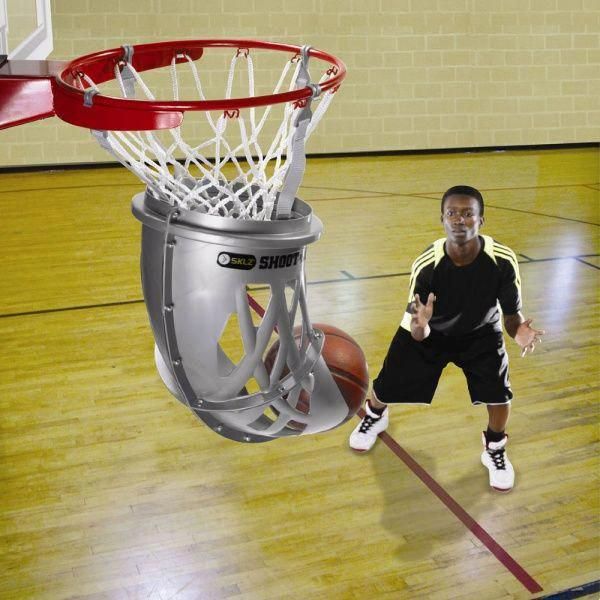
4 - Use Passing Drills With Fast Moving Targets
Instead using of the common stationary passing drills, use drills that require players to pass to someone moving (preferably at fast speeds). Not
only does this overload the player making the drill more difficult (so it seems easy in games), it also better simulates what happens in a game.
Players are generally moving so passers need to learn how to lead a player and hit the moving target.
Danny Miles has won over 900 games at the college level and consistently has teams with the fewest turnovers in that nation. They run drills like
this every day and it shows. One example is the 3 Lane Rush drill that they run every day in practice.
5 - Practice Footwork Every Day
Most turnovers stem from poor footwork resulting in a travel or an out-of-control pass.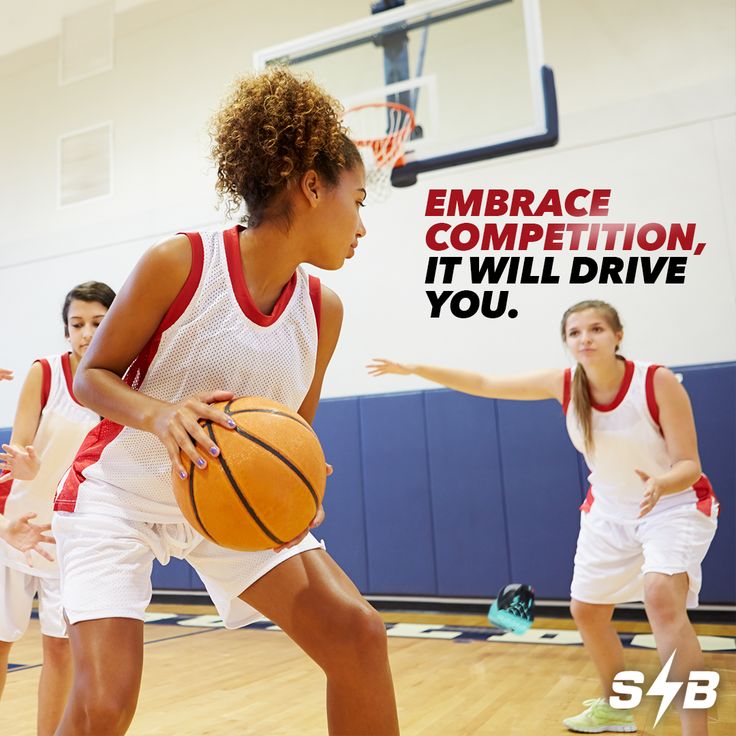 You can reduce these kind of turnovers by practicing jump
stops, facing the basket on every catch, front pivots, reverse pivots, step-throughs, sweeps, and drop steps.
You can reduce these kind of turnovers by practicing jump
stops, facing the basket on every catch, front pivots, reverse pivots, step-throughs, sweeps, and drop steps.
Every day this footwork and mentality should be drilled. Use drills that get players in the habit of catching and facing the basket in triple
threat over and over. Use footwork drills
that require them to pivot in various situations. This will certainly help reduce turnovers and also improve their offensive scoring abilities.
6 - Emphasize the SIMPLE Pass
Quite often, players just need to learn to make the "simple" pass instead of trying to thread the needle or make the spectacular pass. They don't
realize that the simple pass to an open player (which results in the next pass that turns into an assist) is just as valuable as the assist.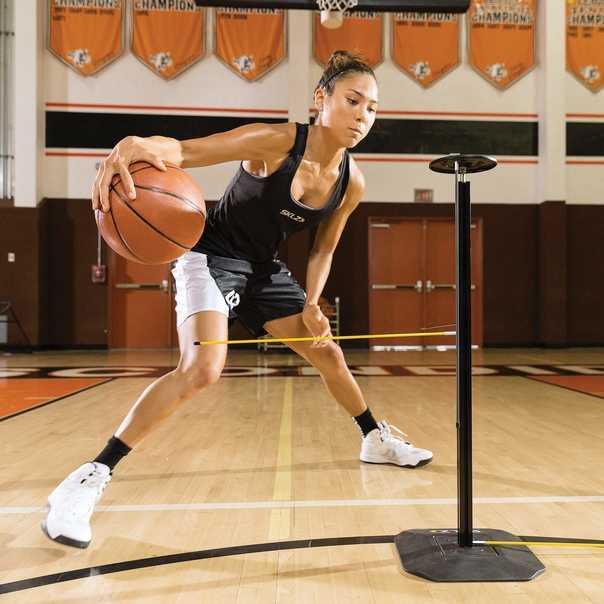
Emphasize the SIMPLE pass every day and you'll see improvement.
Please let us know what you think by sharing your comments below...
5 Keys to Less Turnovers
Turnovers drive coaches crazy and keep us up all night. We watch film trying to figure out ways to improve the next time our team takes the floor. Turnovers often lead to easy points for opponents and can break a team’s momentum or completely change the rhythm of a game. Often turnovers occur at the most inopportune times, ending your own team’s run, or igniting a run for your opponent. Live turnovers where the ball in still in play are the most destructive as they usually gives opponents the chance to attack in an advantageous situation with favorable numbers. A positive Assist/Turnover ratio translates to more possessions and possibilities to score, while also taking away scoring chances for opponents.
For reference, view Assist/Turnover ratios from different levels of the game:
Individual players
NCAA D1 (men)
NCAA D1 (women)
NBA
Euroleague (men)
Team
NCAA D1 (men)
NCAA D1 (women)
But, where does the limiting of turnovers begin? There is a saying in coaching, it goes “practice what you preach.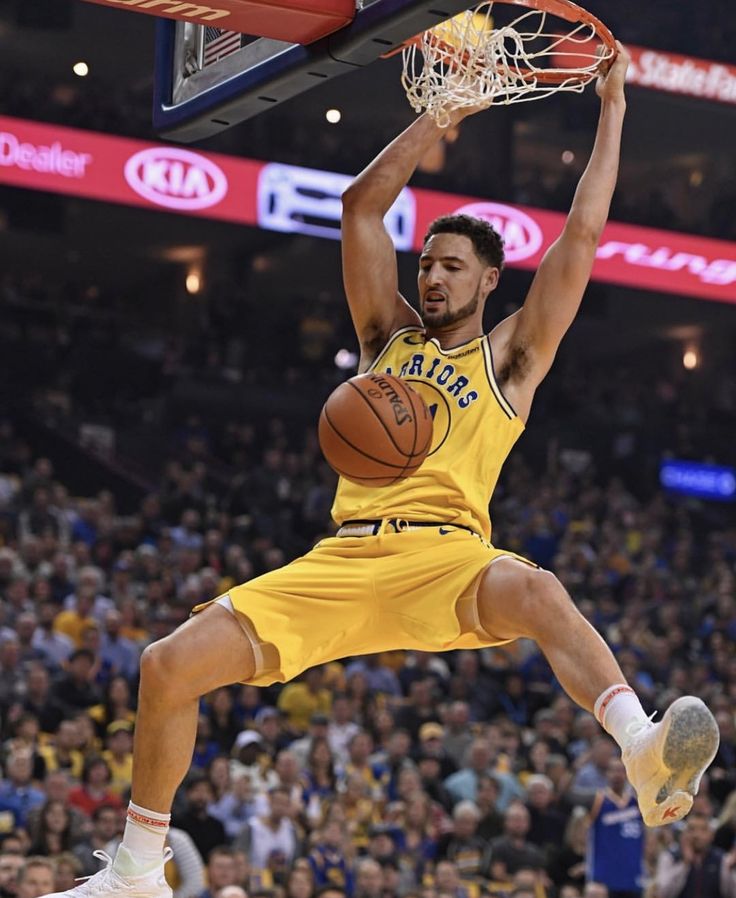 ” If you want to limit turnovers, it starts in practice. Let’s take a look at ways to reduce turnovers with these five keys.
” If you want to limit turnovers, it starts in practice. Let’s take a look at ways to reduce turnovers with these five keys.
1. “You Are What You Drill”: If you want to be a good passing team and limit turnovers, then you must drill this key facet of your offense in practice every day. Passing drills stressing angles, reads and fakes help put a team in a position to not be surprised by anything it sees in a game situation. Key words here are “game situation.” Put an emphasis on making passes like you are guarded in a game. Make every drill competitive and game like in order to simulate players performing under pressure as much as possible. When facing zone defenses, the old adage is “fake a pass to make a pass” and it works. Pass fakes, shot fakes, jab steps, rocker steps – all of these “old school” basketball moves are effective in allowing offensive players the space needed to make a good pass. Structuring an effective in season player development and skill training program is important to keep fundamentals like passing and catching sharp.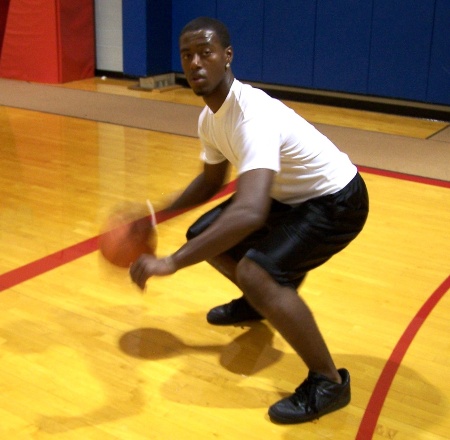
The best teams to watch in the NCAA right now are Villanova men UConn women’s teams because of the way they value the basketball and make good decisions. You’ll notice from the assist/turnover ratio links above, many of the top teams in that category are highly ranked or at the top of their respective league. It is also very important when facing teams that press to have an effective press break. Again, “you are what you drill” as they say, so working on press break on a regular basis is key to taking care of the ball in game situations.
2. Setting/Using Good Screens and Reading: One of the lost arts of basketball is the use of and setting up screens. If a team uses numerous set plays with screening or any type of motion offense with screening, then teaching players how to properly set and use screens is absolutely crucial. This small detail will help limit so many unnecessary turnovers because it takes the defender out of the equation, which is the goal of any screen in the first place.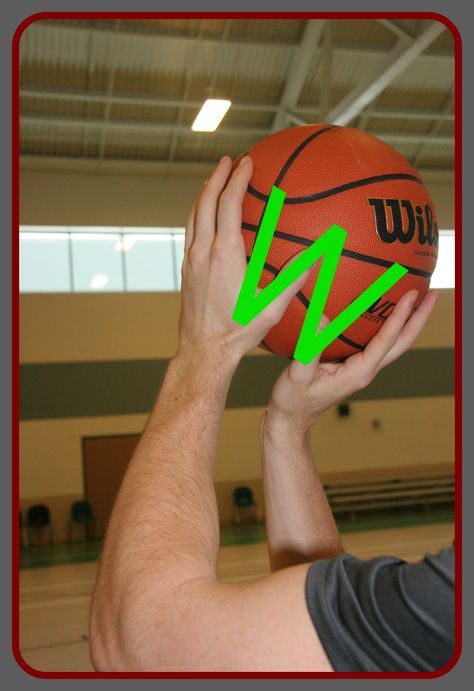 Make the opponent “feel you” when you screen in order to get high percentage shots and more often than not be able to make passes to wide open players. Now of course, defenses will make adjustments like switching screens, but this is where the scouting report comes in, knowing how to take advantage the defense’s game plan without turning the ball over.
Make the opponent “feel you” when you screen in order to get high percentage shots and more often than not be able to make passes to wide open players. Now of course, defenses will make adjustments like switching screens, but this is where the scouting report comes in, knowing how to take advantage the defense’s game plan without turning the ball over.
3. Teach Players How to Get Open: One of the things we drill the most in Europe at the youth level is movement without the ball and getting open. “Dancing with the defense” is not an effective way to get free for a pass. Many teams play “automatics” meaning they come down the floor and are looking for a specific entry pass into their offense, and if you know this as a defensive team, you are able disrupt timing, deny the passing lane or even steal the pass and go the other way for an easy two. Stepping into a defender with the lower body and then exploding out to catch the pass the easiest way to get open – just make sure no hands are used to push off. Players can step between the legs of a defender and then use their body to shield the defender, almost as if posting up. Showing a target hand and sprint out to meet the pass is the final piece. Changing speeds and knowing how to take advantage of what the defense does is what getting open is all about.
Players can step between the legs of a defender and then use their body to shield the defender, almost as if posting up. Showing a target hand and sprint out to meet the pass is the final piece. Changing speeds and knowing how to take advantage of what the defense does is what getting open is all about.
4. Passing Angles and Spacing: How many times have you watched a player try and make a pass against a pressure defense from the top of the key to the wing while standing straight up and down? We all know the usual result of that. Teach players that it’s okay to take a dribble in the direction they want to pass before making the pass from a standstill position against a pressure defense. The angle of the pass is very important. Knowing how to step across a defender to shield the ball and make the pass is another teaching point. Players should step out to make themselves available on ball reversal, encouraging them to come up the line and spread the defense out. This opens up gaps and extra passing lanes which is important when moving the ball from side to side.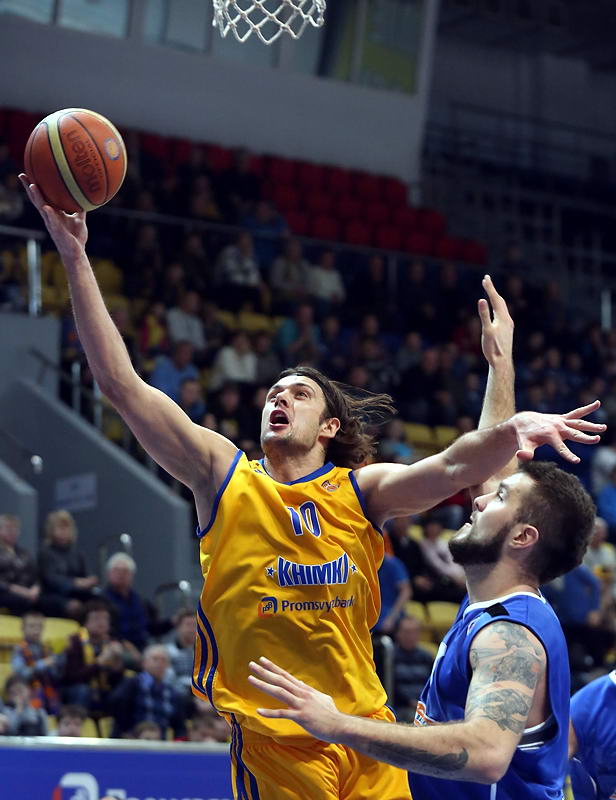 Several teams put tape down in practice gyms not only for defensive purposes, but also for offensive entries. Keeping the floor spread and forcing extra rotations from the defense will usually yield a good look at the basket and greatly reduce the risk of turnovers. Post entry passing is something that needs to be reinforced everyday if you play with a back to the basket type of player. Here again, the angle of the pass makes a big difference, but the post player as has to do their job in sealing their defender in order to complete the pass.
Several teams put tape down in practice gyms not only for defensive purposes, but also for offensive entries. Keeping the floor spread and forcing extra rotations from the defense will usually yield a good look at the basket and greatly reduce the risk of turnovers. Post entry passing is something that needs to be reinforced everyday if you play with a back to the basket type of player. Here again, the angle of the pass makes a big difference, but the post player as has to do their job in sealing their defender in order to complete the pass.
5. Timing and Catching with Two Hands: By timing, we are talking about hitting the offensive player when they’re open and not hanging onto the ball. Too often, a player will hold the ball a split-second too long and then when he/she goes to make the pass, the lane is closed and it results in a turnover or deflection. A deflection disrupts timing and cause precious seconds to tick off the shot clock (depending on the level you play at). As mentioned above in point number two about screening, a player is usually open at the moment he/she comes off the screen (if set properly) and should receive the ball at this moment. Throwing passes without making eye contact, without seeing numbers and without having heads ready will result in turnovers. Another teaching point is making players catch the ball with two hands. Often today we see players “knocking the ball down” with one hand and then trying to control the ball, which sometimes leads to dribbling off their leg, foot, and turning it over. Teach players to catch the ball with two hands and be in control.
As mentioned above in point number two about screening, a player is usually open at the moment he/she comes off the screen (if set properly) and should receive the ball at this moment. Throwing passes without making eye contact, without seeing numbers and without having heads ready will result in turnovers. Another teaching point is making players catch the ball with two hands. Often today we see players “knocking the ball down” with one hand and then trying to control the ball, which sometimes leads to dribbling off their leg, foot, and turning it over. Teach players to catch the ball with two hands and be in control.
As many will notice with these tips, none of them are groundbreaking theories. Taking care of the ball often is about having a strong foundation of using the fundamentals: passing, catching, dribbling, squaring up to the basket, etc. are all things players learn when they first begin playing the game of basketball. But sometimes these fundamentals are so simple that they get overlooked when adding in more complex physical actions, pressure defense, and other factors. Emphasizing these simple fundamentals on a daily basis during practice is the difference in a team giving away possessions or even losing games, and taking advantage of extra possessions to win more games. Good luck!
Emphasizing these simple fundamentals on a daily basis during practice is the difference in a team giving away possessions or even losing games, and taking advantage of extra possessions to win more games. Good luck!
Enjoyed this article? Check out similar ones like Passing Out of Pick and Roll Situations or Skills and Drills: Become a Better Passer.
The following two tabs change content below.
December 19, 2017 – December 19, 2017 – Fotis Katsikakaris, Trainer, MHP Riesen Ludwigsburg vs. Iberostar Teneriffa, Basketball, Champions League, Hauptrunde, 19.12.2017, Ludwigsburg *** Fotis Katsikakaris coach of MHP giant Ludwigsburg vs Iberostar Tenerife basketball Champions League main round 19 12 2017 Ludwigsburg Copyright: xWalther/Eibner-Pressefotox EP_SWR (Credit Image: © Imago via ZUMA Press)
Moving, stopping and turning | Basic Techniques
Basketball technique, except for ball possession (catching, passing, dribbling and throwing into the ring), includes the player's movement on the court.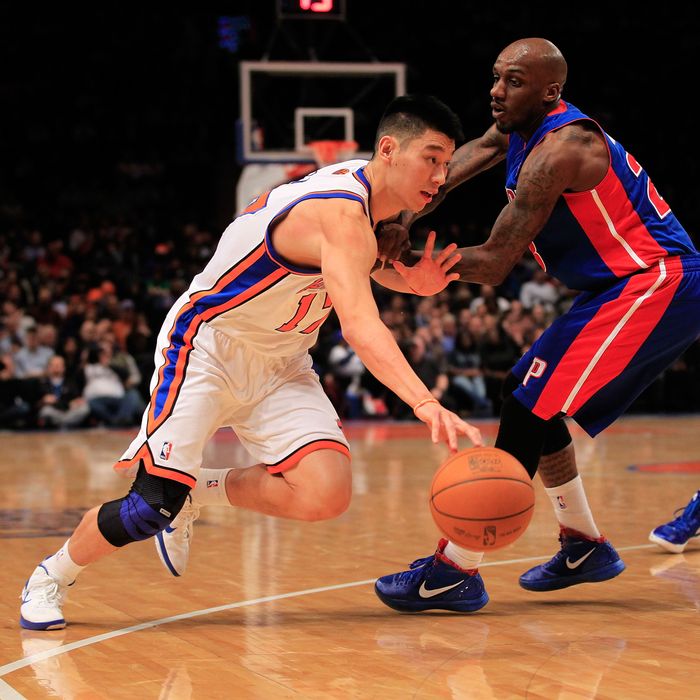 A basketball player must be able to run at different paces, stop quickly, change direction, make unexpected turns, good jumps and a whole range of distracting movements that disorientate the opponent and help the player's freedom of action on the field.
A basketball player must be able to run at different paces, stop quickly, change direction, make unexpected turns, good jumps and a whole range of distracting movements that disorientate the opponent and help the player's freedom of action on the field.
The movements of a basketball player must be varied, based on jerks in different directions. A basketball player during the game should always be at the start before the maximum exertion of forces, all the time he should be ready either for a rapid breakthrough or for an abrupt stop.
Especially important is the ability to move with and without the ball at a variable pace. It is not difficult for a defender to "hold" an attacker who is constantly moving at the same pace and in the same direction. Having adapted to this pace, he easily copes with this task. Another thing is if the attacking player often and abruptly changes the pace and direction of the run. A sudden stop after a dash and a new dash in the other direction completely disorients the defender and allows the attacker to break free of his control even for a moment. This time is enough to receive the ball and shoot the basket.
This time is enough to receive the ball and shoot the basket.
Skillful movement of the player on the field helps him to increase his maneuverability in difficult conditions of the game, i.e. the ability to act actively. The player's maneuverability depends on his ability to maintain the balance of his body in any position. Balance depends on the location of the body weight, which should be distributed on both legs as much as possible at all times. Loss of balance most often occurs if the player acts on straight legs. Legs bent at the knees allow the player to always maintain balance and move equally well in any direction, stop abruptly and change direction.
If a basketball player has lost his balance, then, if necessary, to change the direction of movement, he must first expend time and energy to restore balance and only then change direction. Inept movement requires an extra expenditure of energy, time and causes many errors.
A player of the attacking team, using his movement skills (good start, sudden stop), seeks to break away from the defender and go to an empty place to receive the ball or go with the ball to the backboard.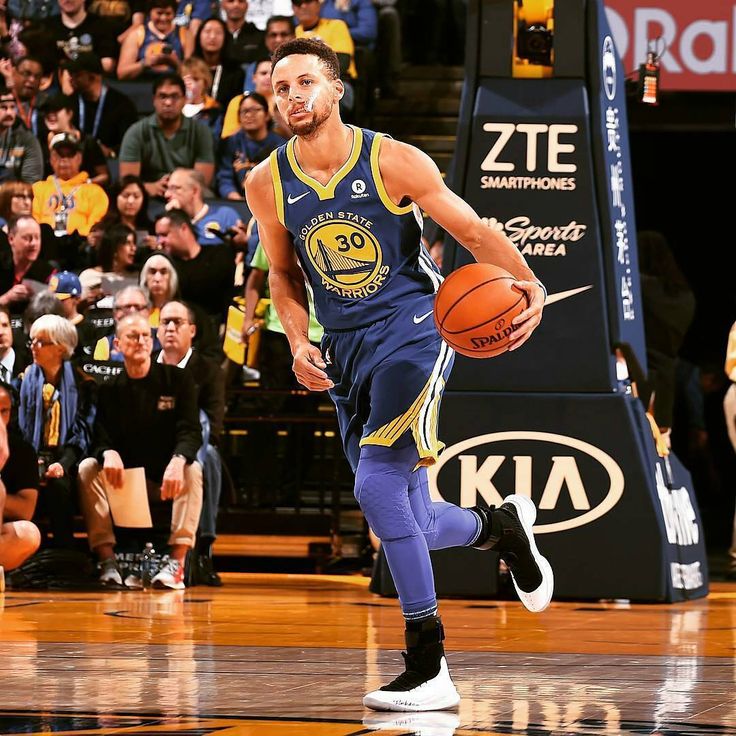
Running . The player's run on the court must be very fast and varied. A basketball player must be able to run forward, backward, sideways, etc. Due to the small size of the court, he rarely has to run more than 12–15 m, more often 5–7 m. It is known that in basketball it is quite enough to break away from the opponent by 60-90 cm to receive the ball or even throw it into the basket. This requires a sharp start and speed of the first steps. For these one or two steps you can always get an advantage of 30-40 cm; this is enough to be inaccessible to the enemy. The effectiveness of a jump start is increased by its unexpectedness.
The beginning of the movement depends only on the attacking player, and this gives him a great opportunity to take the initiative. The start can be taken from a place and on the move - a change in pace with a jerk. A sharp decrease in pace or a sudden stop can also help to break away (behind) from the opponent. A sharp start, a fast run and a different pace of running (acceleration and deceleration) are necessary for every basketball player.
Player stop . A basketball player in a game, moving along the court with or without the ball, if necessary, must be able to stop abruptly at any speed without making a run so as not to lose the ball. The art of a good stop can be mastered only through long and hard work. The faster the movement, the harder it is to stop. The stop mainly depends on the work of the legs (their strength and ability to place the soles of the feet correctly) and the work of the torso.
When moving slowly, a stop can be made with a large step of one (either) foot forward to stop.
Harder to stop when running fast or very fast. To stop while running fast, the player takes one longer step and puts the main emphasis on the foot that first touches the ground after this step. The second leg, landing later, consolidates the stop and, together with the back tilt of the body, eliminates the danger of further movement by inertia (jogging or falling).
When running very fast, the stop must be carried out by jumping with simultaneous landing on both half-bent legs and turning the body by 90 °.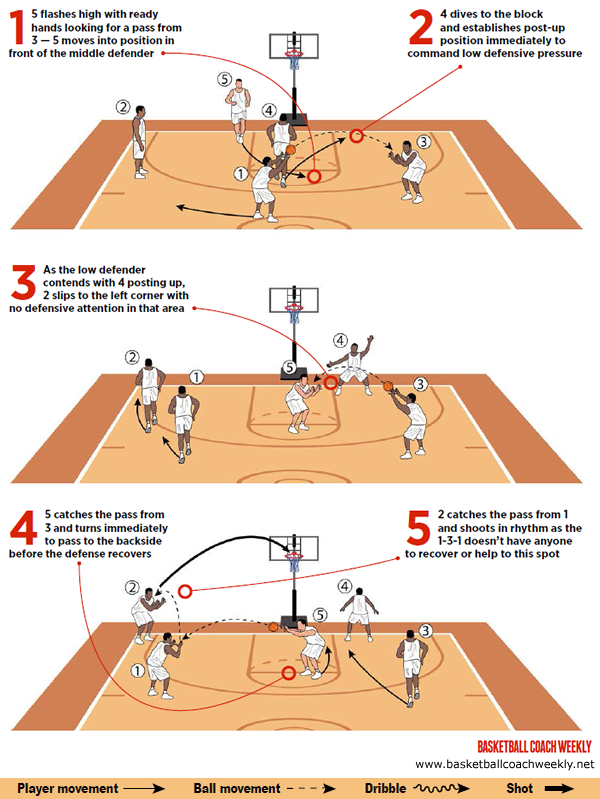 The player, in addition to turning, must deflect the body in the direction opposite to the movement. This is necessary to overcome the inertia of the body obtained during fast running. After the jump, the legs should be shoulder-width apart and land simultaneously on full feet with the desire to switch to gliding. Stopping after any pace of progress, the basketball player must strive to maintain the balance of the body on both legs at all times.
The player, in addition to turning, must deflect the body in the direction opposite to the movement. This is necessary to overcome the inertia of the body obtained during fast running. After the jump, the legs should be shoulder-width apart and land simultaneously on full feet with the desire to switch to gliding. Stopping after any pace of progress, the basketball player must strive to maintain the balance of the body on both legs at all times.
Jumping . The game uses a wide variety of jumps. With the help of a jump, you can intercept a high-flying ball sent by a partner or opponent, take possession of the ball after rebounding from the shield in the fight against the enemy. The jump allows the player to free himself from the opponent in order to shoot the basket or pass the ball to a partner. The ability to jump high gives an advantage in the fight against the enemy during the initial rally of the ball or during a controversial throw.
Jumping can be done with one or two feet, with or without hands. Jumps are made from a place and from a run. All types of jumps are equally important and are used equally often in the game. The small size of the court, the large crowding of players in small areas often require it from a basketball player using running jumps to take off only up without moving forward. The inability to jump only up can cause collisions and, consequently, personal errors. Stubborn struggle for the ball sometimes requires athletes to perform several jumps in a row from a place.
Jumps are made from a place and from a run. All types of jumps are equally important and are used equally often in the game. The small size of the court, the large crowding of players in small areas often require it from a basketball player using running jumps to take off only up without moving forward. The inability to jump only up can cause collisions and, consequently, personal errors. Stubborn struggle for the ball sometimes requires athletes to perform several jumps in a row from a place.
The complexity and variety of applications of jumping in the game require intensive work on increasing jumping ability.
Turns . In basketball, a player can only take one or two steps with the ball, after which he must pass the ball to a partner, throw it into the basket or dribble. Opponent resistance often deprives the player of this opportunity. In this case, in order to free himself from the opponent, protect the ball or throw it into the basket, the attacker uses a turn. The turn is made as follows: the basketball player leans on one leg, on which the weight of the body is located, and, without moving it from its place, with the other foot, with a push, makes a turn in any direction.
The turn is made as follows: the basketball player leans on one leg, on which the weight of the body is located, and, without moving it from its place, with the other foot, with a push, makes a turn in any direction.
Turns can be performed to the right and left depending on the movement of the pushing leg (fig. 1 and 2).
Fig. 1. Right turn
2. Turn to the left side
The main purpose of the turn is to get rid of the enemy and get away from him as far as possible. This can be achieved if the turn is made on half-bent legs and the pushing leg reproduces the movements of the compass (without rising high from the floor, it describes an arc). If the turn is made on straight legs, then the step of the "compass" will be so small that it will not ensure the fulfillment of the task - avoiding the enemy.
The combination of various turns (without taking off the supporting leg) allows the player to use some of them as false turns in the fight against the enemy to disorient the enemy and move on to active actions.
Passing in basketball: types, techniques, life hacks
The team consists of five people, each has his own tasks. Someone works in defense, someone is a forward, and one invariably is a center. All athletes are constantly in close contact and, regardless of position, perform passes. Without this indispensable technical technique, the team game would definitely fall apart. The transmission is the link that allows all players to interact with each other. Let's just say that achieving perfection in transmission is not so easy. It is important to take into account a lot of nuances at the same time: the speed and strength of the pass, the location of the players, and also do not forget about the correct technique. After all, the further course of the game depends on how well the reception is performed. During unsuccessful throws, the opponent intercepts the ball, and the victory begins to slip away rapidly. Therefore, athletes hone their skills during long, grueling workouts.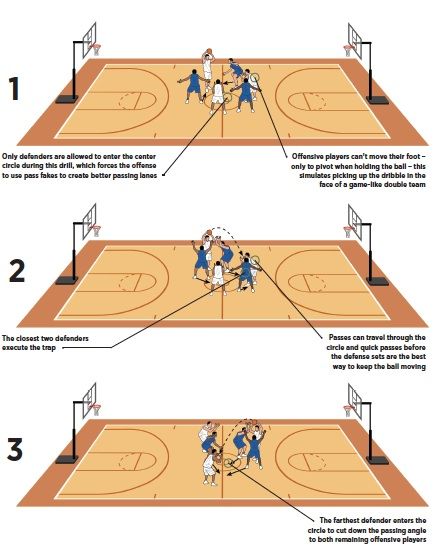 Today we’ll talk about what it is, a pass in basketball, what types it is, and what needs to be done to achieve mastery.
Today we’ll talk about what it is, a pass in basketball, what types it is, and what needs to be done to achieve mastery.
Start training gradually. Don't get frustrated if it doesn't work right away. It takes time and perseverance to achieve a good result. We are sure that even the most famous basketball players missed passes more than once at the beginning of their careers.
Types of passes
There are several ways to pass the ball to a teammate. This useful skill needs to be practiced for a long time in order for it to achieve first-class performance. Passing the ball in basketball is called a pass, it is used both in motion and in a static position . It is given with one or two hands, in a jump or while remaining in place.
From the chest
It is considered the most common and effective method. It is used in a variety of situations and locations on the field. To make this pass:
- place your hands evenly on either side of the ball;
- spread your fingers;
- place the ball at the chest;
- Extend your arms fully forward and push the ball to another player.

It is permissible to take a step forward in parallel with the push. The pass should fly in a direction just below the partner's chest. It is in this position that it is easy to receive a pass. In addition, you can perform the reception with two hands or one.
Rebound
This version is technically very similar to the previous one. Only in this case, direct the projectile with a blow to the floor. You can also take a step forward. Please note that this basketball pass is slower. It is this factor that makes it attractive to the opponent, as there is a great opportunity to intercept the blow. Thus, in order not to give the opponents the ball, carefully calculate the time and distance.
From behind the head
The method is especially relevant when you find yourself trapped in a difficult position. To pass:
- put your hands on the sides of the ball;
- spread your fingers;
- take the projectile behind the head;
- Extend your arms, take a step forward and throw the ball.

From the shoulder
This style is also called "baseball". Because the execution technique is almost identical. Due to its great power, such a pass is great for situations where a quick break is needed. The ball is passed, most often, from one end of the court to the other.
On the move
Another name for dribbling pass. Dribbling refers to dribbling the ball with both hands. Considered one of the most difficult, it is successfully performed by professional players. The problem is that the basketball player needs to look in one direction while performing this deceiving maneuver, and pass the ball in the other. Adding to the complexity is that it all happens on the move, in contact with players from the other team.
10 rules for making a good pass
The winning teams practice hard and spend hours perfecting every pass. In the game, in order to achieve the cherished goal, all players are involved. It is in the composition of the team that amazing rapid combinations are played out that cause delight and surprise. Thus, transmission is a particularly important technical element . Pay attention to a few secrets that will help you to give quality passes:
Thus, transmission is a particularly important technical element . Pay attention to a few secrets that will help you to give quality passes:
- Be sure to take a step towards your partner. Thanks to this simple movement, the accuracy and speed of transmission are greatly increased.
- If possible, do not pass the ball in close proximity to an opponent. This will reduce the chances of interception.
- The ball must arrive at a specific location. Often, with poor skill, you can send a pass to the head, groin or shoulder of a partner. The ideal position is above the waist but below the shoulders.
- The projectile must be fired from the fingertips, not the palms.
- Always keep an eye on what is happening on the site. Remember, a basketball match is not your finest hour, but well-coordinated teamwork. Therefore, always analyze the position of the players on the field.
- When dribbling, do not look in the direction the projectile will go.
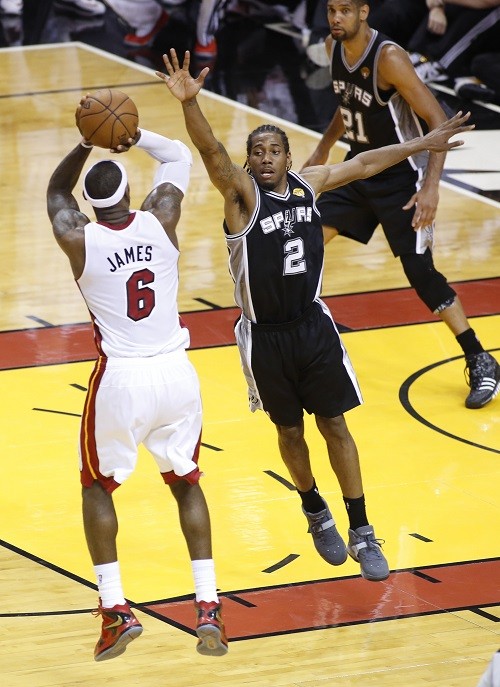
- While performing the pass from the chest, rotate the wrist at the end.
- Try to pass as quickly as possible.
- Your transmission should be comfortable to receive. Observe the simultaneous clarity and accuracy, softness and pressure.
- Do not make a fake pass if you are not confident in your abilities.
Basketball Catching Tips
Let's just say that basketball is not an easy sport. During this contact fight it is easy to get injured or bruised. Therefore, beginners often find themselves in situations where the ball flies to the head or pierces the chest.
To properly receive a projectile, pay attention to a few points:
- Let your partner know that you are ready to receive a pass.
- To receive the ball, extend your arms slightly forward, bend them at the elbows, relax and spread your fingers.
- Follow the movement of the ball. So, you will not miss the incoming projectile.
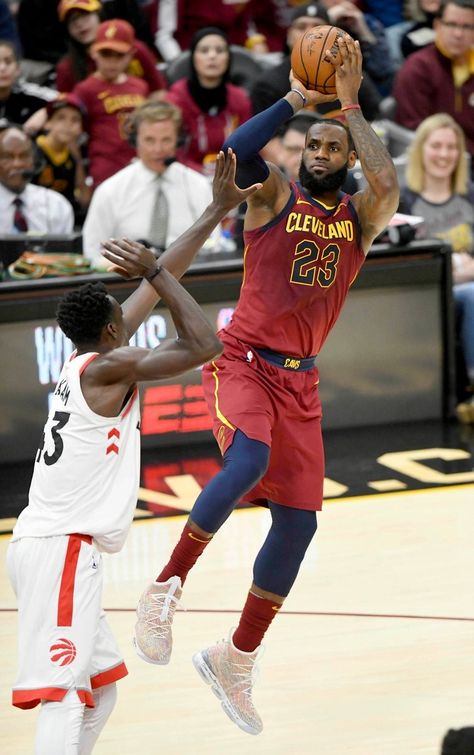
- While receiving the transmission, do not stand still, take a step forward.
- After receiving the ball, place it in the center of your chest and keep it close to your body.
- Remember, never catch a projectile with one hand. If you are not a professional, then he will definitely pierce your chest.
How to reduce losses and improve passing
Here are some simple tips to improve your skill:
- Focus on forced and difficult tricks. This will increase speed and strength. To do this, use two balls. For example, two players can take turns passing to you without interruption.
- Calculate the distance correctly. In this matter, exceptionally long training sessions will help you, during which you will feel the field, the weight of the ball.
- Train on the move. Learn to give short passes.
- Focus on the situation. There is no need to use unnecessary complicated tricks when the situation allows for a simple transfer.
